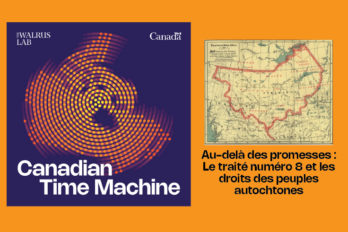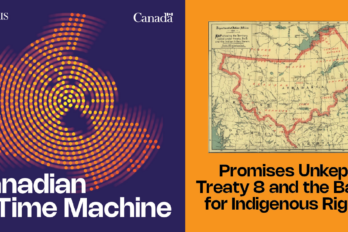HOST:
Immersing yourself in your subject is not a new concept. Actors do it. Engineers do it. Writers do it. But why is it important?
According to photographer Kerri Martin, sometimes in pursuit of accurate representation, you can discover a deeper meaning in why you do what you do. And doing it in a conscious way has all kinds of benefits.
Welcome to the Conversation Piece.
KERRI MARTIN:
I first made eye contact with a wildcat almost seven years ago. A shadow of movement on the side of the road grabbed my attention. I pulled over, rolled down the window and found myself staring directly into the eyes of a Canadian Lynx. This was literally a dream come true. I never imagined I would be in the presence of such a magical creature. Let alone allowed to make eye contact. Eye contact with a wild animal, has the power to thrust you into the intenseness of being present. Your mind softens, allowing your natural instincts to bubble over logic and reason. Profound gratitude infused this encounter and countless more wild experience experiences in the years since. A desire to explore this state of gratitude more fully, in part, is what inspired me to embark on a masters in photography.
When I started two years ago, I planned to examine the concept of ethical wildlife photography. It did not take long, however, for me to lose interest in this concept. Discussions around ethics tend to be about the rules and guidelines, the do’s and the don’ts. Rules are important. I get it. We learn from those who know more than us, but we also learn from the uniqueness of our own experiences. This is what interests me. My values as a wildlife photographer are in-line with what seems to be the socially accepted notion of ethical: minimise stress, do no harm. It is always my goal to have as little impact as possible with my wild subjects. But I have discovered I am most successful at low impact photography when I’m intensely aware of the nuances of the environment. Or conscious – paying the same degree of attention to my natural instincts as I do to my logic and reason.
Having shifted my focus from ethics to consciousness, I began to transform from a photographer to a natural investigator. I started consciously exploring wildlife habitat tracks and signs in January, 2019. I never imagined I would spend so much time studying animal poop, but wow, was it ever interesting! And the tracks there is just so much potential. Lynx, Pine Martens, and wolves: they are perfect representatives of the three classes of Canadian predators, feline, weasel, and canine. I love these animals. I enjoy documenting hundreds of their tracks and bundles of their poop over the past year or so, but I still yearned to be in the presence of wild animals, not just to photograph them, but to be with them. None of my multiple tracking excursions led to any actual sightings. I did. However, get to see all three species. The sightings were just completely unexpected. I saw random pine marten briefly in July and another, just a couple of days ago. No photos though. And then there was the wolf I saw in June.
He just appeared on the side of the highway. He looked skinny and scruffy and had a bit of a limp, but seemed to be trotting along at a good pace. I took several images and eye contact was made when he walked right beside my car. Indescribable. In examining the photos later, however, I got myself into a bit of a negative headspace. I couldn’t help think about the wolf’s lean body condition and his limpm and the highway and the traffic he had to dodge. I started to worry. For several weeks later, I carried around an undercurrent of anger towards the highway. All roads, really, and humanity as a whole. Animals have to deal with so much because of us humans. Still. I forged forward with my investigations. Then in early November, another random encounter, on another wildlife sign seeking mission out west with a friend, I was stopped for some highway construction.
I stared beyond the vehicle and envisioned a lynx emerging from the forest. This is a common occurrence. I often imagine what it would be like to see another lynx. A sudden awareness of the disruptive construction interrupted my reverie. I found myself once again, angry at the road, the cars, the constructions, and all of humanity. “Like a lynx would come out in this mess,” I thought to myself. I became conscious of my beautiful surroundings and just kind of snapped out of it. I shifted from bitterness to appreciation. Seconds later, a glimmer of nebulous movement ahead transformed into a real life feline. I pulled over just in time to make eye contact with the lynx before she floated off into the trees. No photos for me, but my friend got a couple. While preparing to leave the scene, a few minutes later, another lynx appeared crossing over from the opposite side of the road.
This one offered me a photographable full body view. Two lynx. I mean, holy crap. I was overcome with gratitude realising I just got another photo of the lynx, and once again, made eye contact with the wildcat. She acknowledged my presence and invited me into hers. No judgement analysis, just pure acceptance. With this came a profound realisation; the roads I so strongly disliked are not just man-made obstacles. They also offer pathways of connection for animals and humans. Wild animals have learned to use our roads to their benefit. Without the roads, my access to nature would be very limited. For now, I choose to appreciate the roads. I choose to revel in appreciation. My wolf and lynx encounters were seemingly random, but so purposeful in terms of deepening my awareness of the beautiful interconnectivity of life. Perhaps my conscious exploration of animal signs did lead to these encounters in some way. You did not have to go into the wilderness to experience nature or to consciously explore nature. Just step outside. There is an abundance of urban wildlife, at least here in Calgary. Have you ever noticed the iridescence of a magpie’s tail feathers, reflecting a vivid purply green when struck by the light at a certain angle? Or watched a Canadian goose mom care for her babies, shielding her babies from the rain? Next time you see them pay attention. Thank you.
HOST:
Kerri Martin is a nature and wildlife photographer and she spoke at CIFAR Presents The Walrus Talks Exploration in 2020, and she’s just one of the over 800 fantastic Canadians who have walked and wheeled the stage at The Walrus Talks.
If you enjoyed this podcast, consider donating to The Walrus. We are a registered charity that relies on our community of donors and sponsors to produce compelling journalism, events and podcasts. Learn more about how your support can make an impact at thewalrus.ca/donate.




